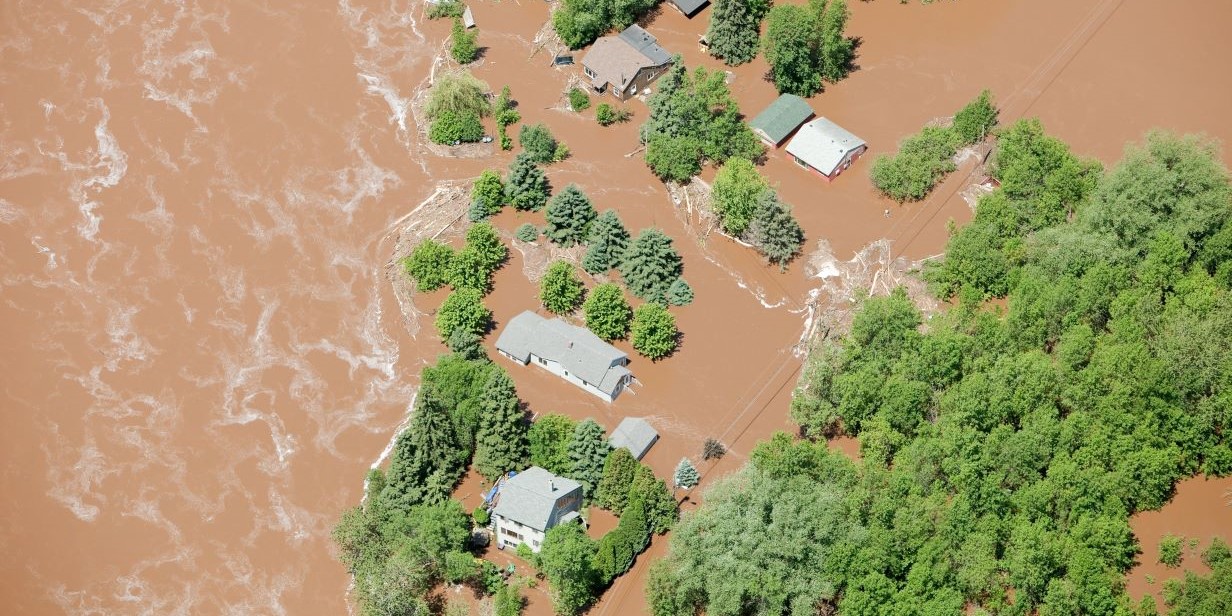Seeing beyond the obvious: Your location’s impact on your flood risk
While knowing your proximity to historical flash flood zones, coastal storms and flood prone rivers is important, it’s just a starting point.

A sobering fact underscores how fully understanding your exposure to potential flooding is critical to minimizing the impact on your business and profitability: FEMA estimates that people outside of high-risk flood zones file more than 20% of all NFIP claims. So, while knowing your proximity to historical flash flood zones, coastal storms and flood prone rivers is important, it’s just a starting point.
As a leading engineering-based commercial property insurer, we know flooding can occur on a variety of sites, from those adjacent to bodies of water to those on dry land far from water sources. For example, coastal floods can expose inland areas to tidal river flooding, while stormwater flooding can inundate paved areas before it has a chance to reach natural rivers, streams or manmade drainage systems – a very present concern with the rapid increase of vast paved sites for fast-growing industries such as EV battery plants, data centers and microchip factories.
Weather is changing faster than the pace of business readiness.
Dynamic changes in global weather patterns, including an increase in airborne moisture levels from warming global temperatures, are energizing storms. For commercial businesses, the risk is compounded by a wave of new construction in or near flood plains.
From 2024’s devastating storms in Spain and Eastern Europe to those in North Carolina and Florida, the damage to commercial businesses has been significant. These storms serve as a sobering reminder of the need to get ahead of risks. In partnership with FM, you can evaluate, prepare and protect your facilities, critical equipment and operational continuity.
A unique engineering approach to protect and sustain your business. FM brings a customized practice to the potential impact of your geography and topography on the resilience of your facilities. Equipped with decades of data and a record of on-the-ground flood control success stories, FM engineers physically and fully evaluate your location, structures and business operations to understand the flood risk. They see your vulnerabilities in person through the lens of science and engineering, crafting a practical flood protection plan and solutions that support your unique business and continuity requirements.
This on-the-ground engineering capability is why FM risk assessments uncover hazards conventional insurers miss. From surface regrading that improves drainage to plant layout reconfigurations that protect your costliest equipment and essential processes, FM flood recommendations reduce the impact of flood damage to keep your business moving.
We prioritize your property and processes. Whether it’s for a new construction site or existing facility, FM engineers evaluate surrounding properties and topography, working from the perimeter inward, identifying where terrain management solutions like floodwalls, regrading, curbing and storm water systems are needed to direct water away from your buildings.
In cases where water entry can’t be fully blocked, we apply solutions such as interior channeling, or elevating business-critical functions and equipment like electrical, alarm, telecommunications, heating, ventilation and air conditioning (HVAC) and costly machinery above predicted water levels. We further solve for water entry with FM Approved flood mitigation products so that water and residual moisture do not leave supplies and products stained, rusted or unsafe for consumption.
Solutions, standards and safety. With FM Approvals, flood protection product testing and certification protocols are the basis for ANSI/FM Approvals standards for flood mitigation equipment. From perimeter barriers, opening barriers and mitigation valves & pumps to penetration sealing devices, early warning sensors, and more, FM Approved products undergo comprehensive testing to evaluate performance in real flood conditions. Certification confirms a product’s effectiveness in helping to minimize potential flood-related damage, increasing resilience to flood risks. Many leading regulatory authorities, as well as one out of every four Fortune 500 companies, place their trust in FM.
Invest in a detailed Flood Emergency Response Plan. FM loss records document a compelling conclusion: Facilities with a well organized Flood Emergency Response Plan have nearly 70% less flood damage and return to full operations sooner than those without a plan.
It’s why in addition to helping you deploy our recommended solutions, we can help your risk management team develop a Flood Emergency Response Plan that specifies when to seal flood doors and gates, deploy temporary barriers and manage for contingency factors like local roadway flooding impact on supply chains and access to your facilities. Because the more prepared you are, the less damage and disruption you’ll endure.
Choose resilience, choose an FM engineering assessment. Lean on FM to understand your flood exposure, facility and business continuation requirements, so when you face unusual flooding, you can confidently do business as usual.
